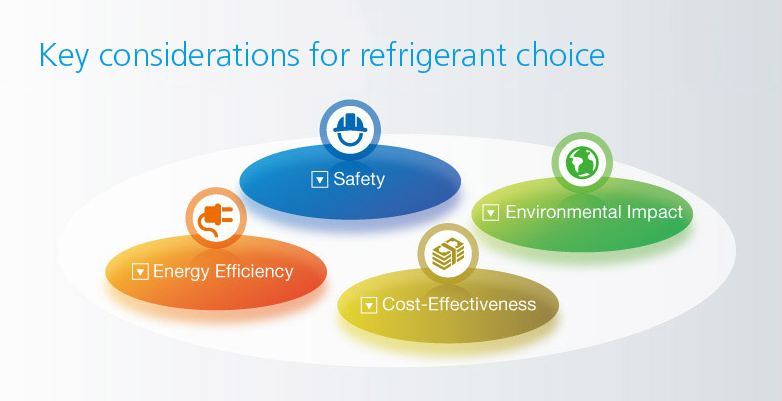Commercial Refrigeration
Sustainable
cooling solutions :
Reducing the climate impact of refrigerants while increasing energy efficiency in existing supermarket refrigeration systems

The EU F-Gas Regulation has introduced a phase-down of HFCs in Europe. A first massive phase-down step occurred in 2018, significantly reducing the available quota of HFCs. As a result, HFCs with a high global warming potential (GWP) are increasingly under pressure. Supermarket refrigeration is one of the main sectors where high GWP refrigerants have been used over the past decades. Refrigerant solutions with a lower GWP to retrofit existing supermarket refrigeration systems which have not reached their end of life are therefore of key importance. In parallel, considering that energy consumption of refrigeration systems represents on average 50% of a typical supermarket’s energy use, energy efficiency must not be sacrificed when retrofitting existing systems to a new refrigerant. Finally, particularly for existing systems which have not been designed for the use of flammable or high-pressure refrigerants, safety and compatibility with existing components play a key role.
- Cooperation between Daikin Chemical Europe (refrigerant producer), Westfalen AG (refrigerant distributor) and K+K supermarkets (retailer) in Epe, close to Gronau in Northern Germany
- Retrofit of an existing, standard design, low & medium temperature central, multipack supermarket refrigeration system connected to various cold / freezing rooms, chilled cabinets and racks.
- Replacement of high GWP HFC R-404A with the lower GWP HFC R-407H (Creard R-407H). Being based on traditional chemistry, the HFC R-407H is compatible with traditional elastomers, gaskets and lubricant oils.
- For optimum system performance, changing and adjustment of system components such as the main expansion valves.
Click here, here and here for more information

- GWP reduction of 62% with HFC R-407H (GWP=1495) compared to HFC R-404A (GWP = 3922)
- Minimum changes to the existing equipment and wide availability of system parts due to comparable thermo-physical properties, suitable pressure characteristics and compatibility with existing materials and oils
- Classified as non-flammable refrigerant (A1 class) ensuring safe operation
- After three months operation, significant increase in energy efficiency of 9% for low temperature cooling and 2% for medium temperature cooling at constant cooling capacity
Click here to download the case study
